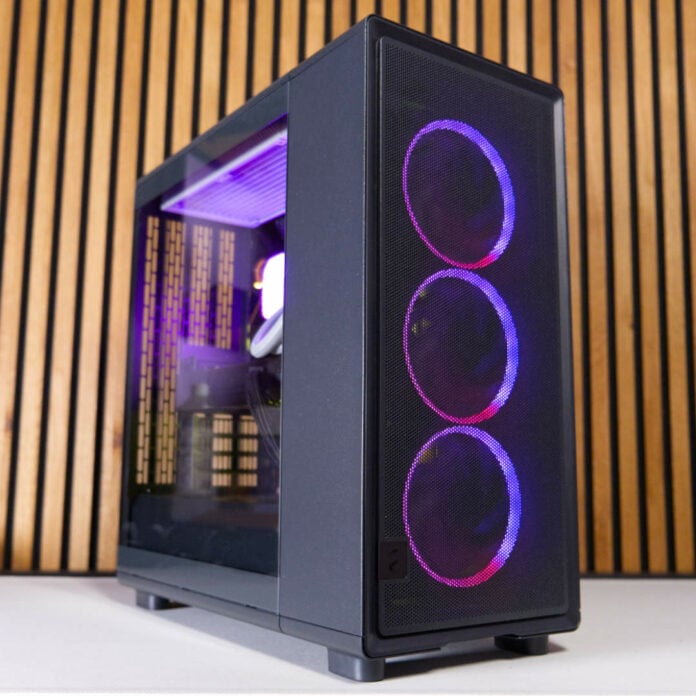Fractal Design struck gold with North. Combining timber accents with rock-solid airflow, it proved PC cases didn’t have to look like power stations to cool like one. Epoch follows a similar blueprint, albeit with less living room chic and more summer practicality. It ditches the oak for mesh, swaps the furniture flair for a cleaner steel finish, and steps in as a more airflow-first alternative.
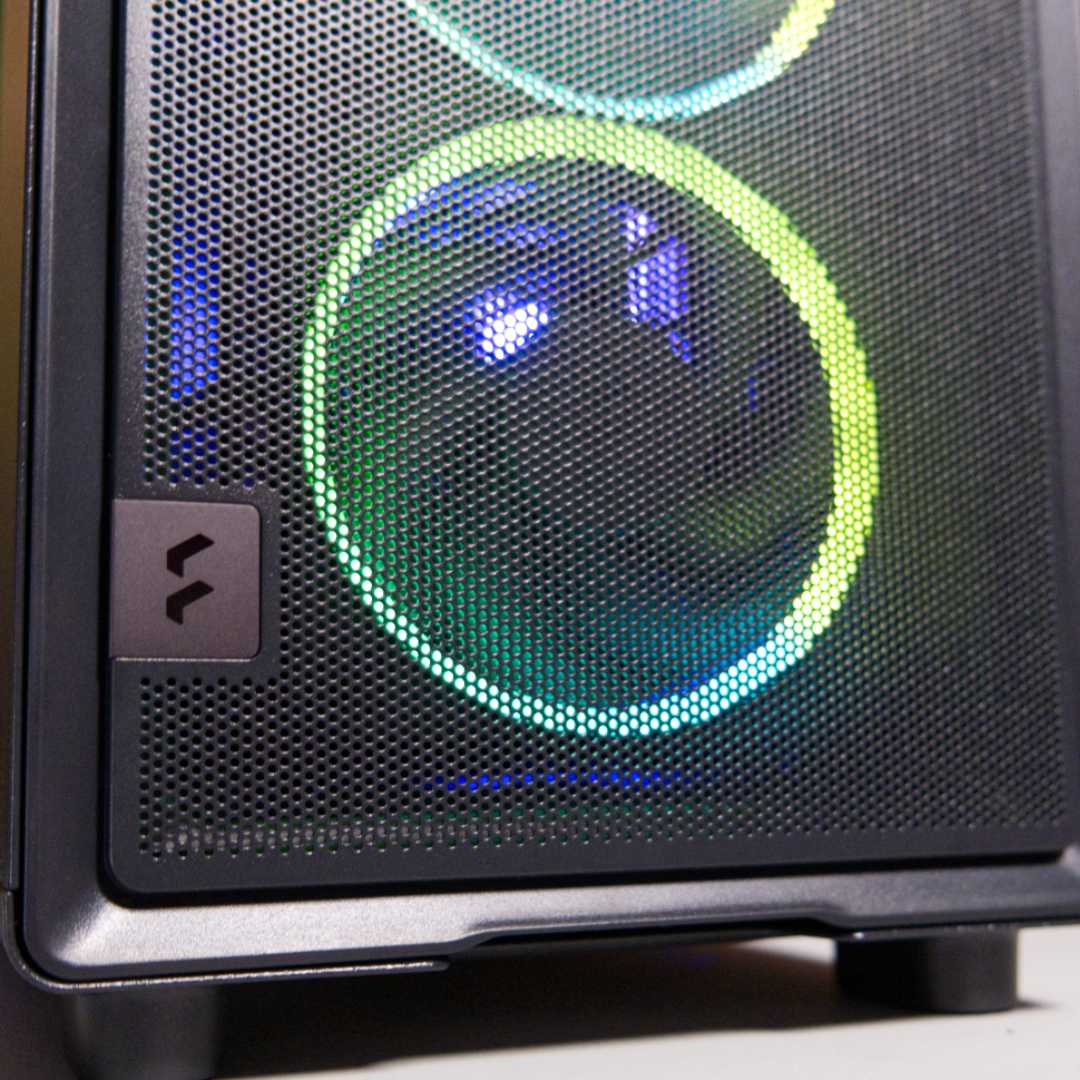

Fractal Design Epoch Black TG Light Tint
£120 / $130
Pros
- Refined minimalist design
- Great value
- High-quality build
- Three Momentum RGB fans
- Good choice of finishes
Cons
- Limited cable grommets
- Top panel slides off easily
- Sides lack quick release
Club386 may earn an affiliate commission when you purchase products through links on our site.
How we test and review products.
Look closely and the resemblance is undeniable. Internal layout, side panel thumbscrews, cable routing, even the niggly top panel is all here. But rather than simply repackaging North under a new name, Fractal has taken the opportunity to refine certain touchpoints, particularly around panel access and RGB implementation.
Starting at £99.99, Epoch doesn’t just borrow from a winning formula, it reshapes it for an audience that values subtle lighting, strong thermals, and a clean aesthetic over trendy materials or heritage furniture vibes.
Models
Epoch arrives in five flavours, each catering to a slightly different aesthetic preference. At the base level, you’ve got the Black Solid model, which skips tempered glass entirely in favour of a full steel panel. It’s the stealth pick, ideal for builds where lighting is irrelevant and airflow is everything. Step up to Black TG Light Tint or Black TG Clear Tint and you’re trading that solid slab for tempered glass, with the choice between a smoked or see-through finish depending on how much you want your internals to shine.
The full stack shapes up as follows:
- Black Solid – £99.99 / $109.99
- Black TG Light Tint – £99.99 / $109.99
- Black TG Clear Tint – £99.99 / $109.99
- Black TG RGB Light Tint – £119.99 / $129.99
- White TG RGB Clear Tint – £119.99 / $129.99
The real showpieces are the RGB models. Black TG RGB Light Tint, like the one reviewed here, adds three Momentum RGB fans up front and subtle lighting control via motherboard header. Meanwhile, White TG RGB Clear Tint opts for a more luminous look, using the reflective nature of white paint and clear glass to turn the whole case into a lightbox. Both RGB editions command a small premium at £119.99 / $129.99, but you’re getting both visual flair and functional airflow out of the box.
Specification
Fractal cases are known for their Scandinavian restraint, but Epoch manages to feel distinct within the family. It’s slightly shorter and narrower than North, with a more rigid and purposeful frame. The front panel takes inspiration from the airflow-optimised ethos of Meshify, but instead of angular polygons, we’re greeted with a refined flat surface, softly indented to suggest depth without actually jutting out. The brushed aluminium badge is etched with subtlety. Nothing here screams for attention, and that’s precisely the point.
| Fractal Design Epoch specs | |
|---|---|
| Dimensions (L×W×H) | 447 x 215 x 469mm |
| Motherboard support | ATX mATX Mini-ITX |
| PSU length | 255mm |
| Fans | Front: 120mm (x3 included) or 140mm (x2) Top: 120/140mm (x2) Rear: 120mm (x1) |
| AIO compatibility | Front: 120/140/240/280/360mm Top: 120/140/240mm Rear: N/A |
| Max CPU height | 170mm |
| Max GPU length | 372mm |
| Connectivity | USB Type-C 20Gb/s (x1) USB Type-A 5Gb/s (x2) 3.5mm audio/mic combo jack (x1) |
| Warranty | Two years |
Build quality is exactly what we’ve come to expect from Fractal. Steel panels are thick and resistant to flex, while the Black TG RGB Light Tint tempered glass side is slightly smoked to mask cable clutter but still showcase RGB internals when lit. No matter which model you go for, they feel particularly premium thanks to a clean paint finish, while RGB versions usher in tasteful illumination courtesy of the three pre-installed Momentum 120mm PWM fans.
The included trio of blowers aren’t your average pack-ins. Fractal has equipped them with LCP (liquid-crystal polymer) blades and FDB (fluid dynamic bearing) motors, offering a good mix of performance and quietness. They’re mounted behind the mesh front panel by default, giving the system a push-first airflow strategy, with room at the top for dual 120mm or 140mm fans if you want to exhaust extra heat from your CPU cooler or AIO radiator.
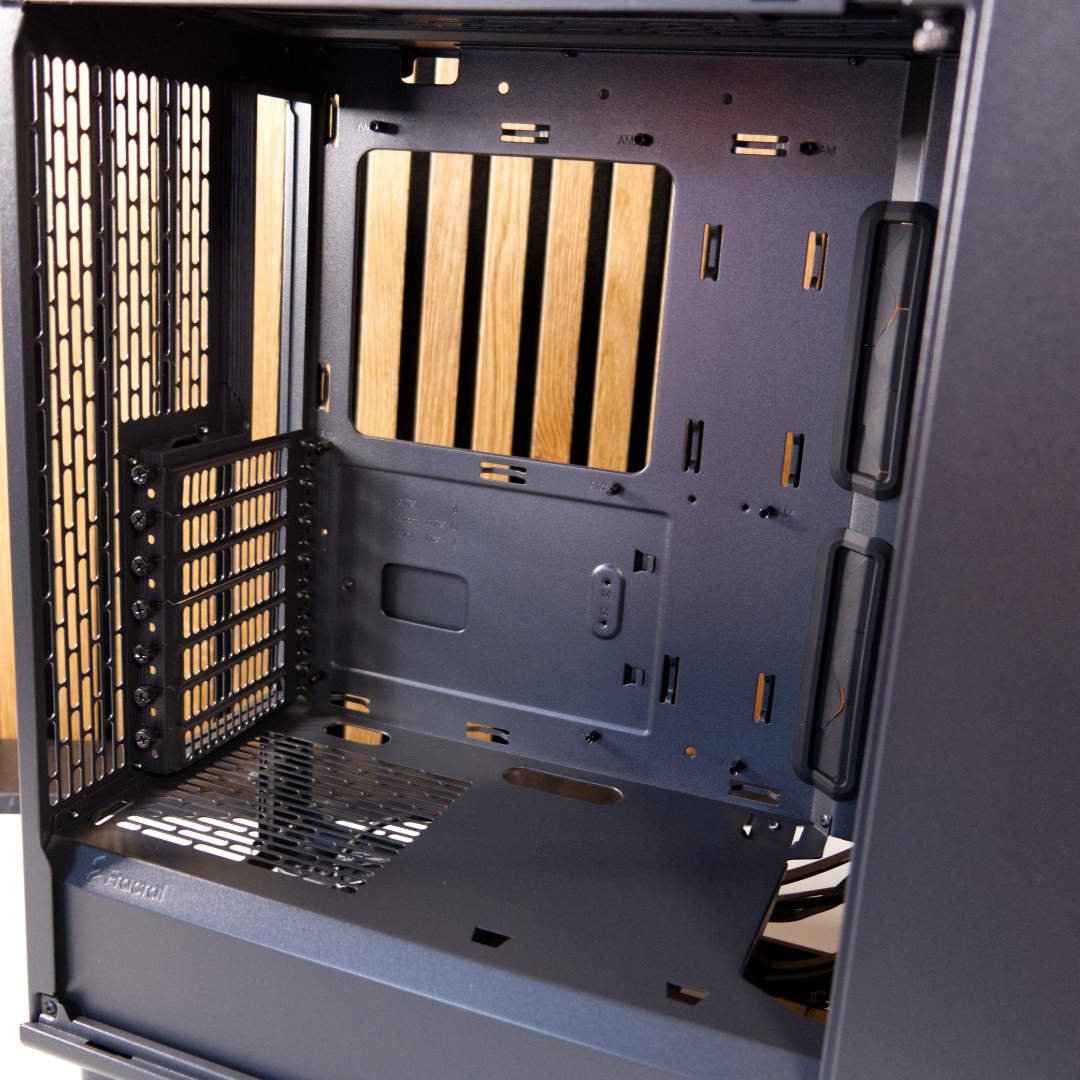
Front and top radiator support is generous, allowing up to 360mm up front and 240mm in the roof. Our setup, built around Intel Core i9-13900K and cooled by be quiet! Light Loop 240, fits comfortably without obstructing key connectors or clashing with the top edge of the motherboard. There’s no rear fan included, but there is a mount for a 120mm exhaust if desired.
Removable filters at the front and bottom help keep dust at bay, while the roof is a fully vented mesh panel, held in place by a new slide-to-remove locking mechanism. This might sound minor, but it’s one of Epoch’s best usability touches, letting you clean or modify your build without wrestling plastic clips.
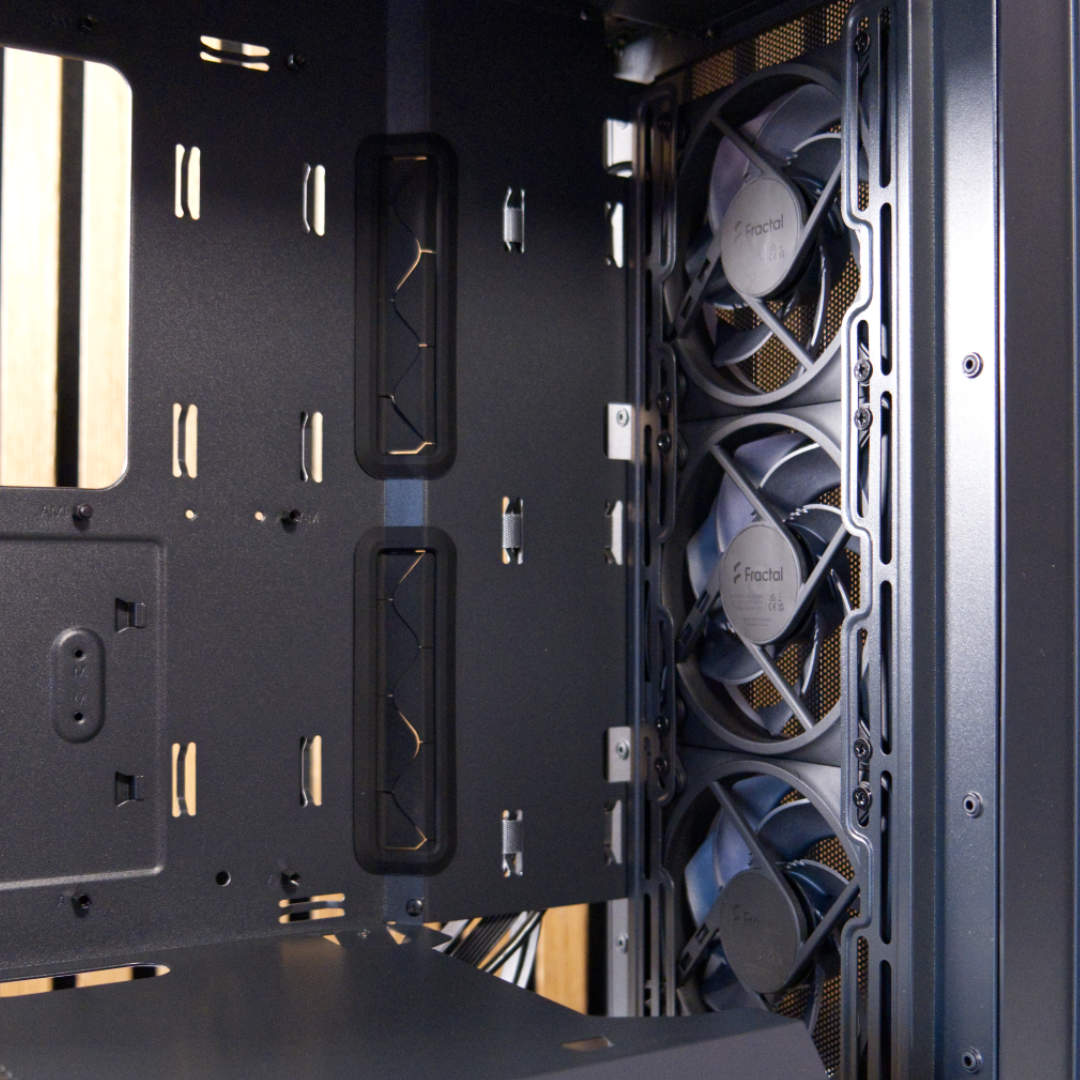
There’s no unnecessary lighting on the exterior or rear, just three front fans to cast an ambient hue through the front mesh. Momentum fans glow evenly thanks to their ringed diffusers, and because Fractal’s RGB controller is baked into the fans themselves, there’s no clunky hub to wire up. The header simply daisy-chains from one fan to the next, and you can plug it into your motherboard’s 5V ARGB for synchronisation with Asus Aura, MSI Mystic Light, or similar platforms. If you prefer something more subdued, the standard TG and Solid panel models skip RGB entirely but retain the same airflow capabilities.
Internally, it’s classic Fractal fare: a full-length PSU shroud hides the power supply and two removable 3.5in drive bays, while SSD mounts behind the motherboard tray offer clean storage options. You can fit power supplies up to 155mm, or 255mm if you remove the closest HDD rack.
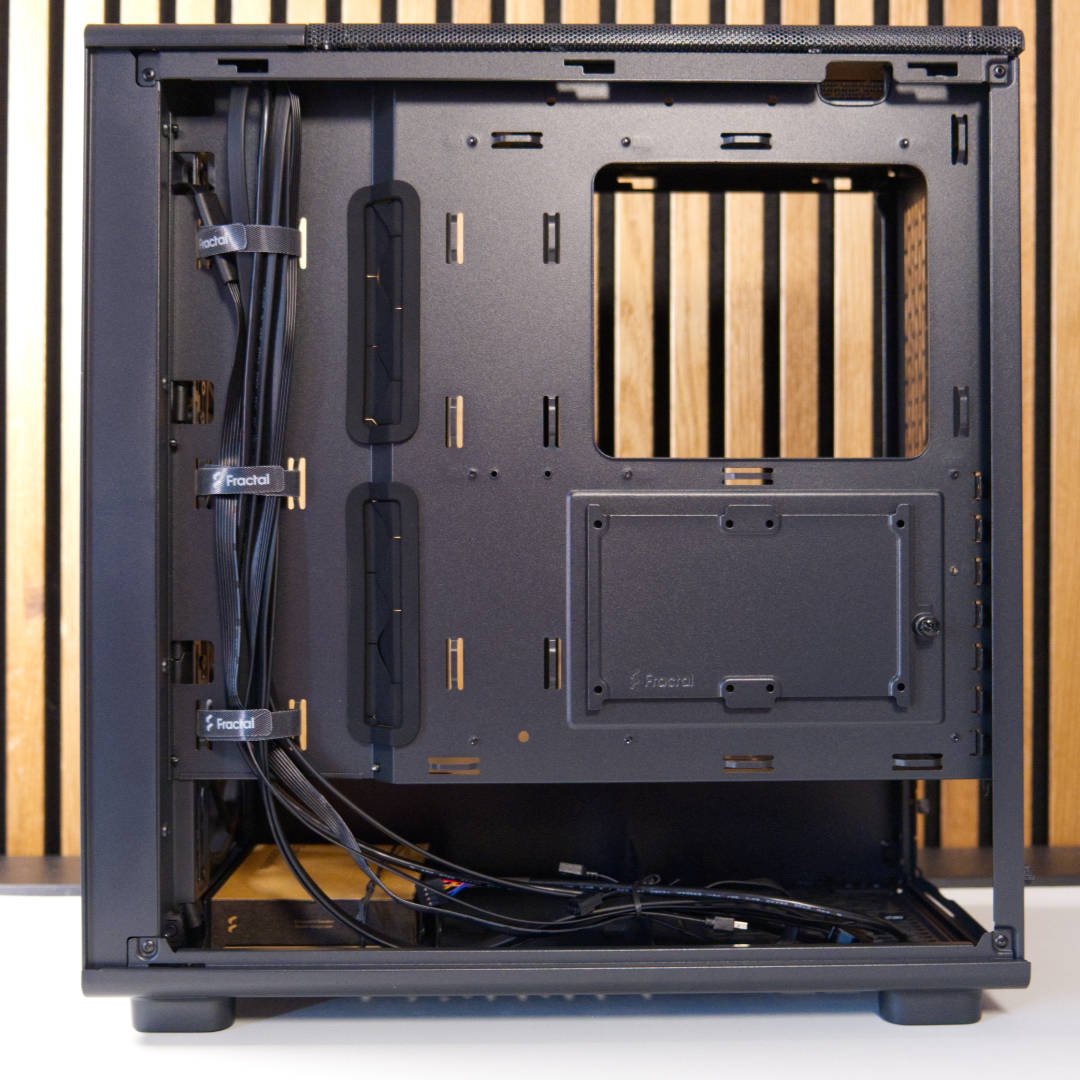
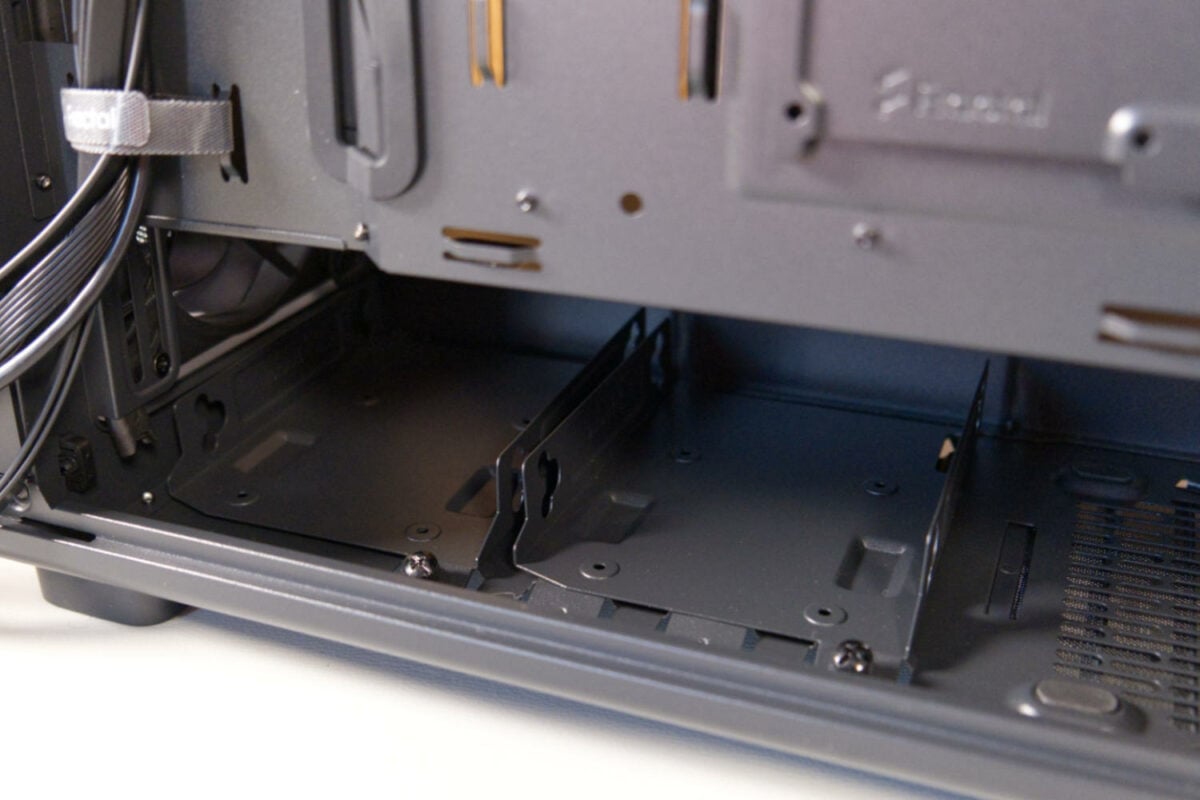
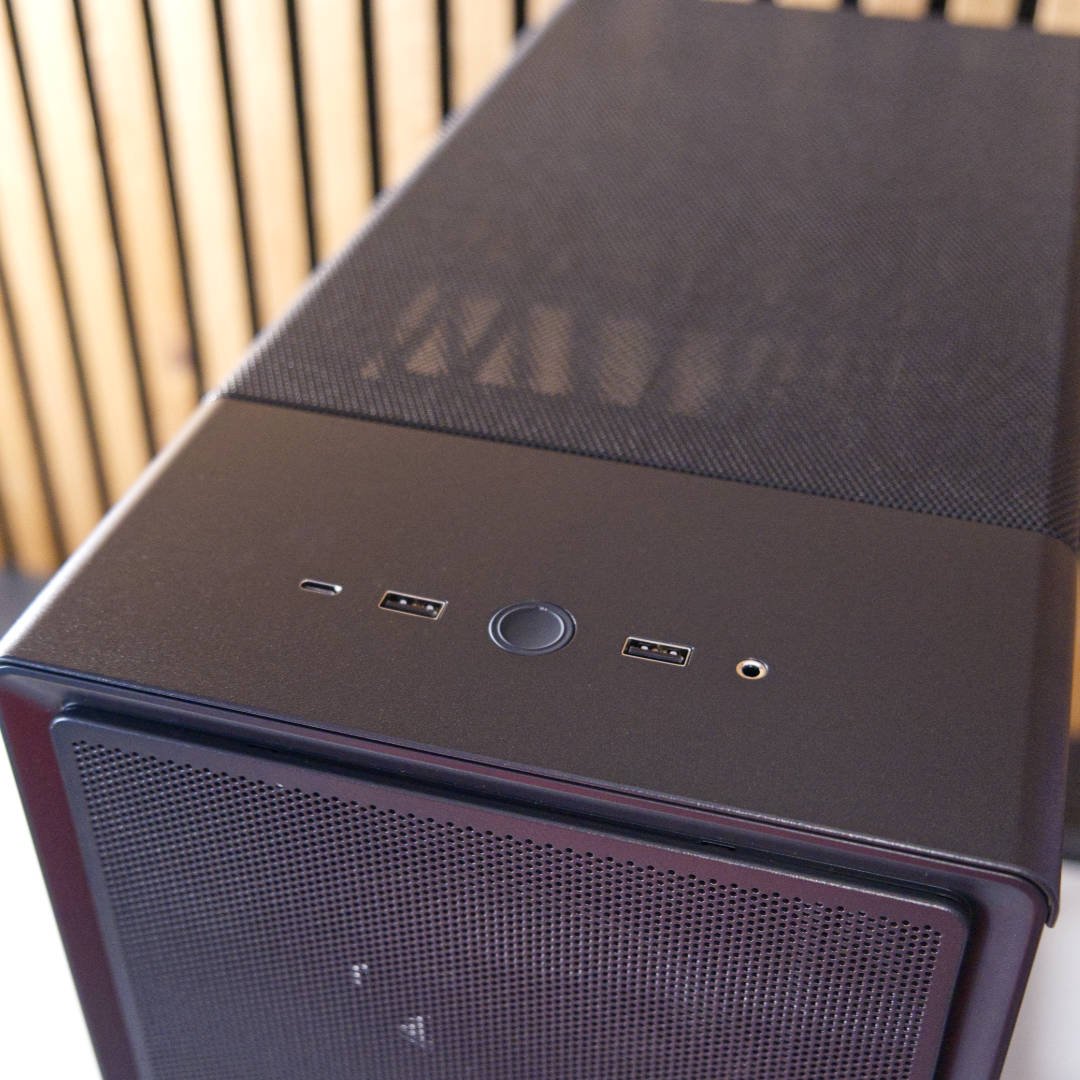
For a mid-tower, it’s on the smaller side at 447 x 215 x 469mm but still packs enough room for Mini-ITX, mATX, and ATX motherboards. GPU clearance is a healthy 372mm with fans installed at the front, or 345mm with a front-mounted radiator. The top I/O includes one USB-C 20Gbps port, two USB-A 5Gbps ports, and a combo audio jack, all within easy reach.
Despite being slightly more compact than some airflow-first ATX cases, Epoch doesn’t compromise on practicality. The interior feels open, with just enough distance between the top panel and the motherboard for radiator-and-fan sandwiching. The tempered glass panel is tool-less and secure, while all thumb screws are captive and hard to lose.
Building
If you’ve built inside Fractal North, you’ll be on familiar ground. Epoch’s interior is near-identical, and that brings both strengths and the same few niggles. It’s an intuitive layout that makes the most of its limited space, but not without flaws.
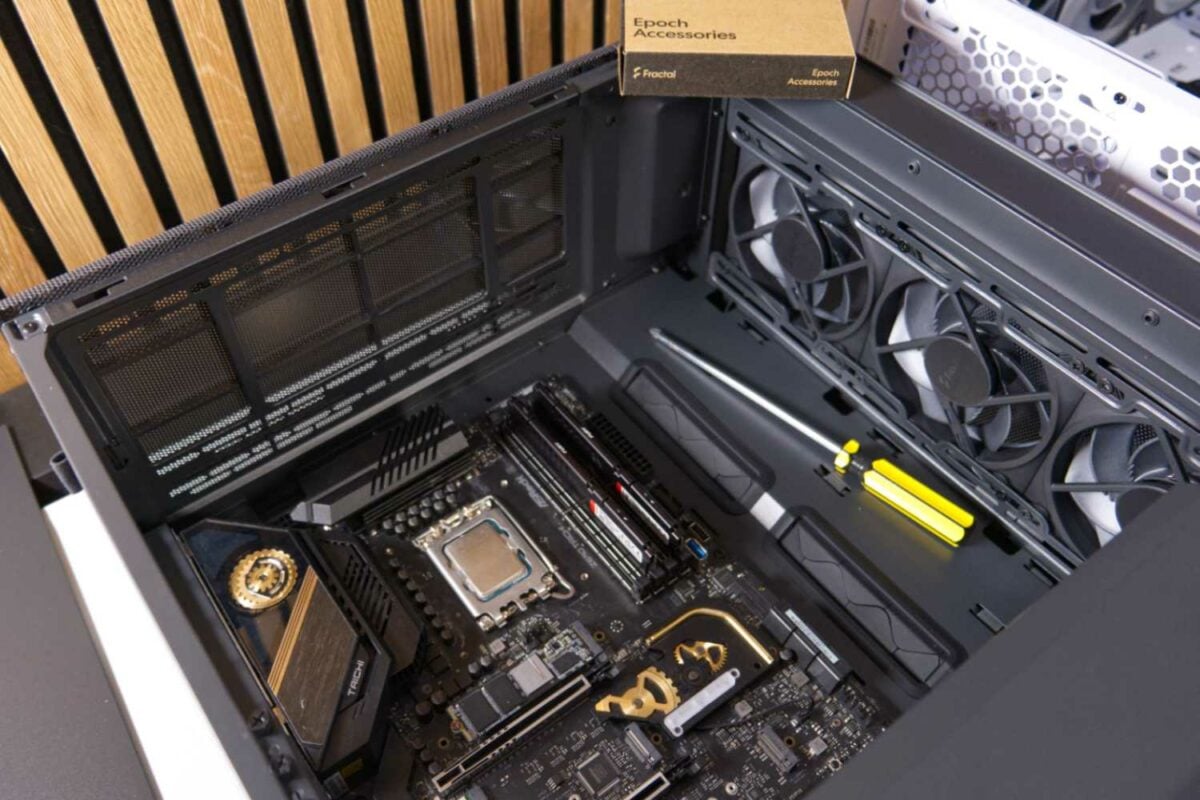
Removing the side panel isn’t quite a one-finger affair. Rather than the pop-to-release system found on Define 7, Fractal sticks with traditional captive thumb screws. It’s no hardship, but feels a little behind the times. That said, reseating the panel is refreshingly faff-free, as there’s no fighting with ill-fitting rails or misaligned tabs – just a smooth glide and click into place.
The front panel is far easier to work with than on North XL. Gripping the bottom corners and giving it a gentle tug sees it come free without fuss, and snapping it back on produces a satisfying, tactile click. Since Epoch comes with three Momentum RGB fans already mounted, there isn’t much need to access the front unless you plan on loading a 360mm AIO, but Fractal’s clearly refined the clip tension here.
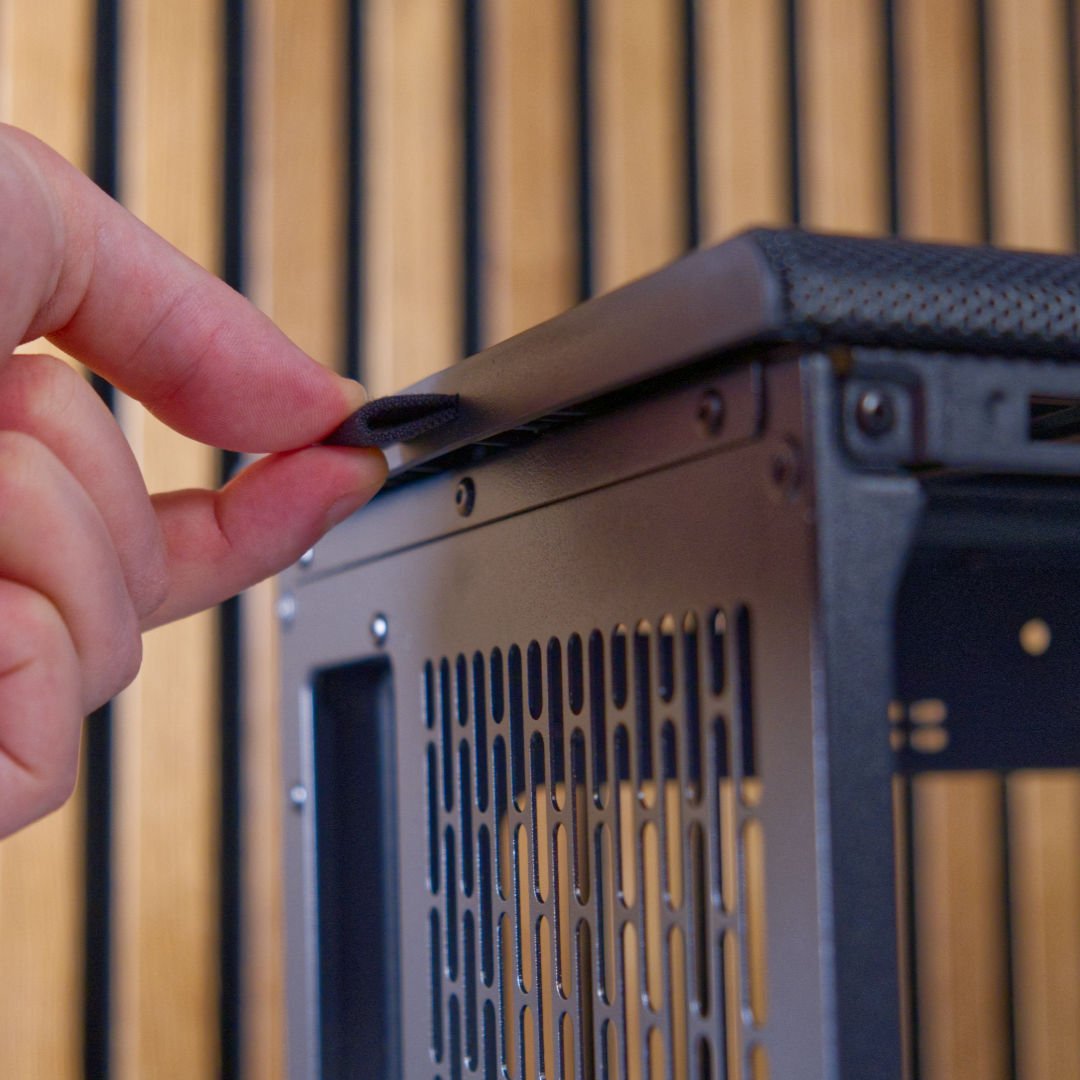
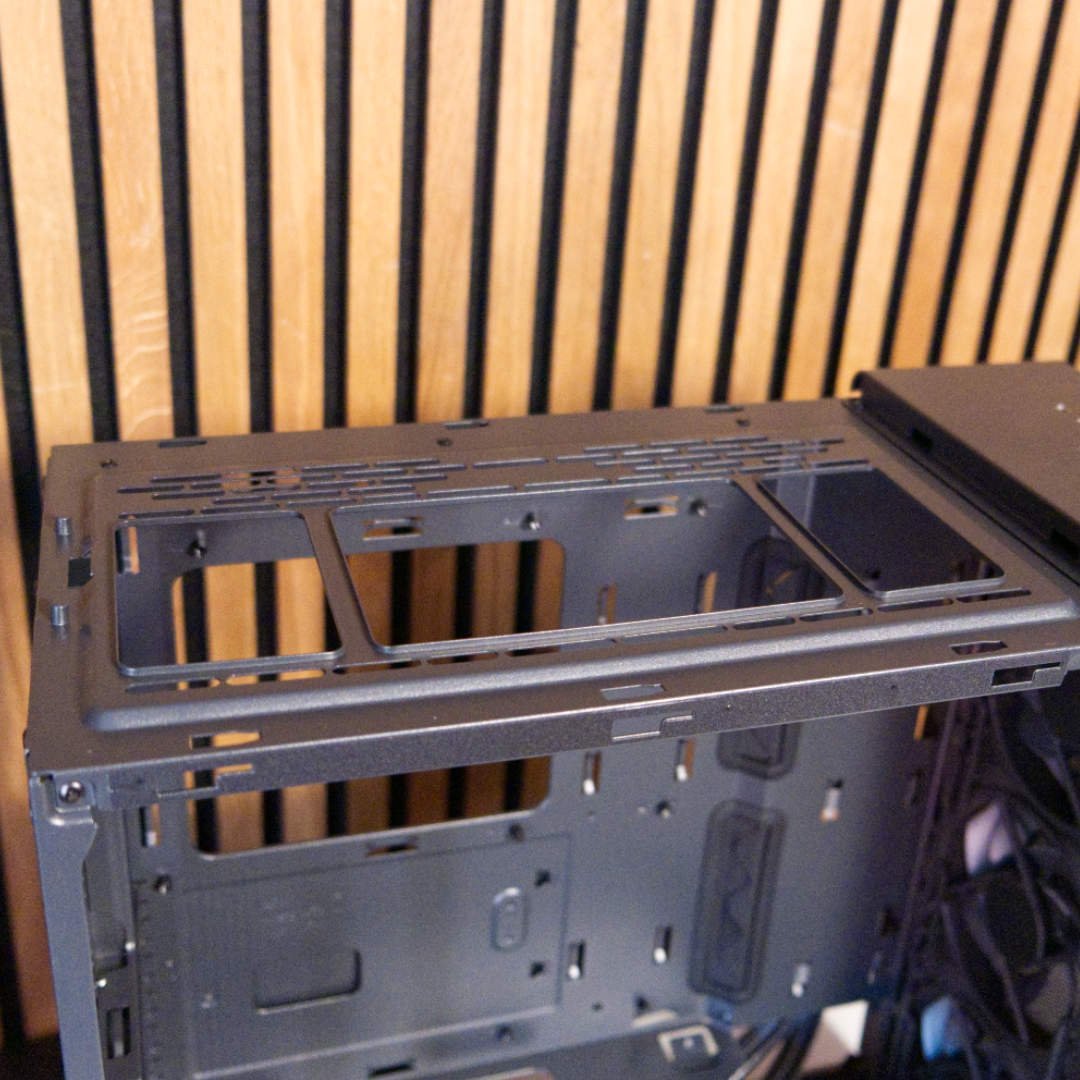
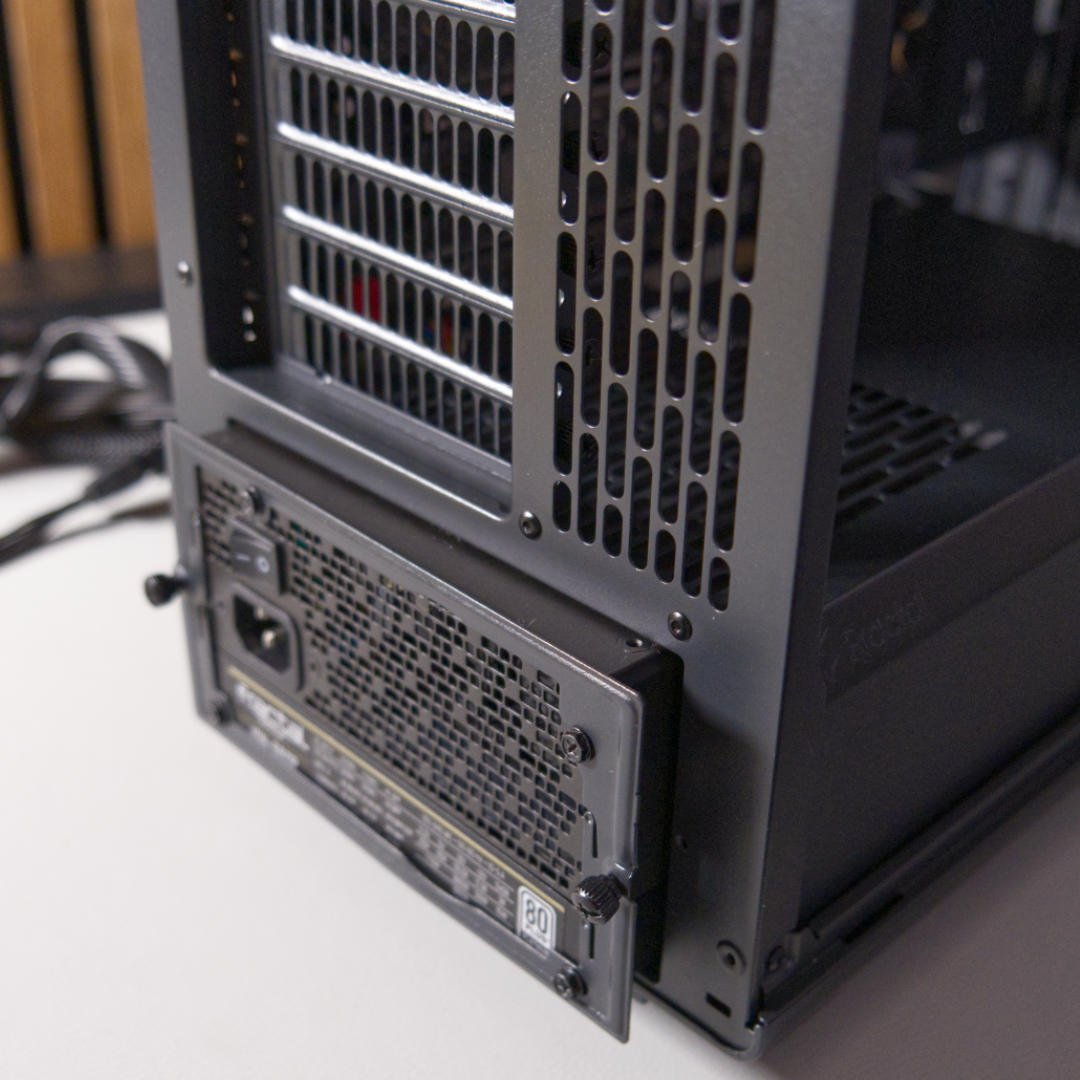
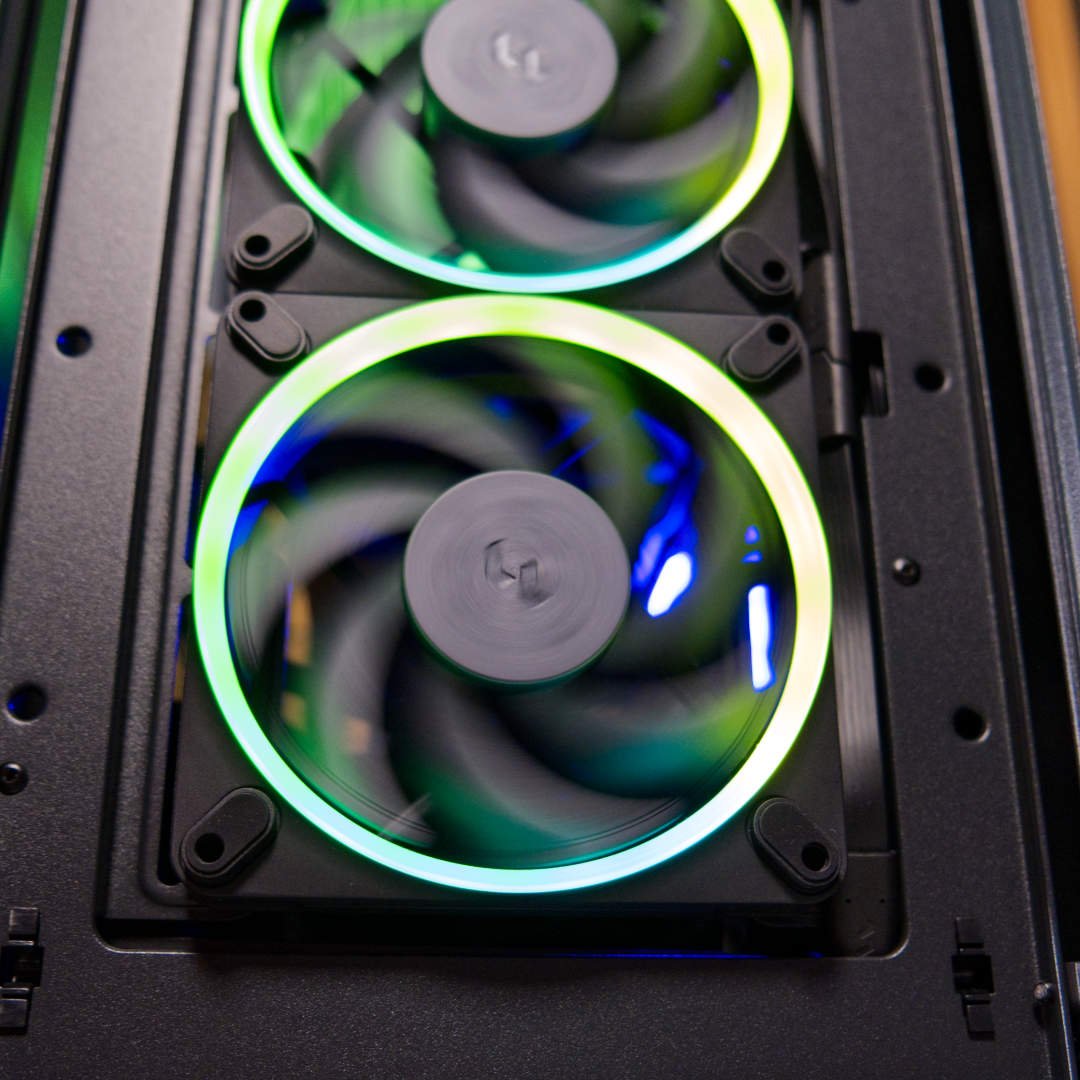
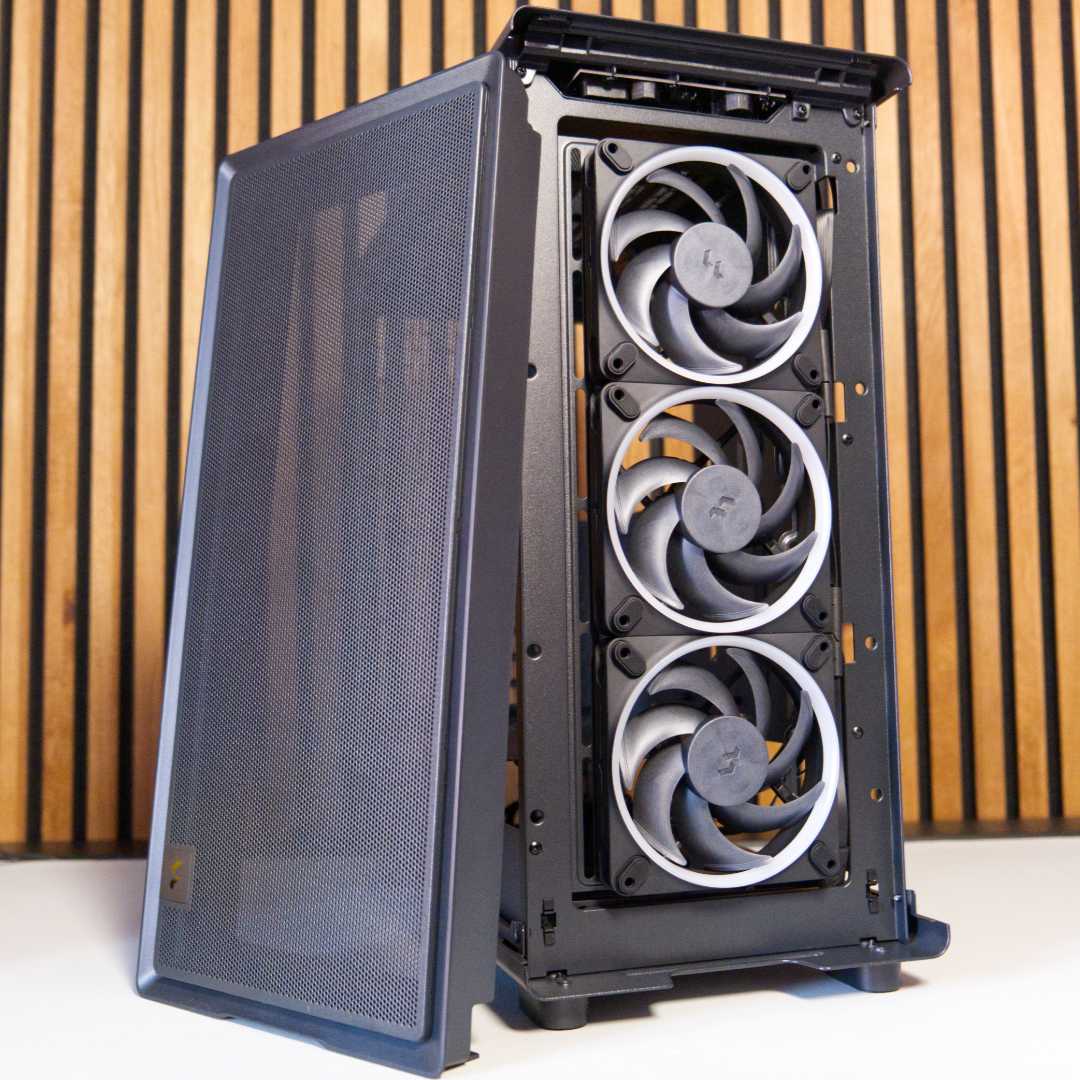
Sadly, I can’t say the same for the top panel. The pull tab looks classy and the slide design feels clever until you pick the case up wrong or nudge it mid-build. It offers zero resistance. Without a locking mechanism or even light magnetism to keep it secured, the panel comes loose with minimal provocation. I’m no fan of thumbscrew clutter, but this is one area where function better serves over form.
As for internals, everything installs smoothly. The PSU bracket detaches, drive trays are tool-less, and both side panels line up cleanly. Vents either side also means there’s no worries over which way you’ll install your power supply because there’s no risk of suffocation. I’d still point it down to vent through the dust filter rather than blowing onto the GPU, but it’s dealer’s choice.
Cable management
Fractal Design Meshify 3 XL Ambience Pro has perhaps ruined cable management for the rest of the market with trenches and notched clips. Epoch doesn’t go quite that far, but it still delivers a commendably clean experience, especially for a mid-sized chassis.
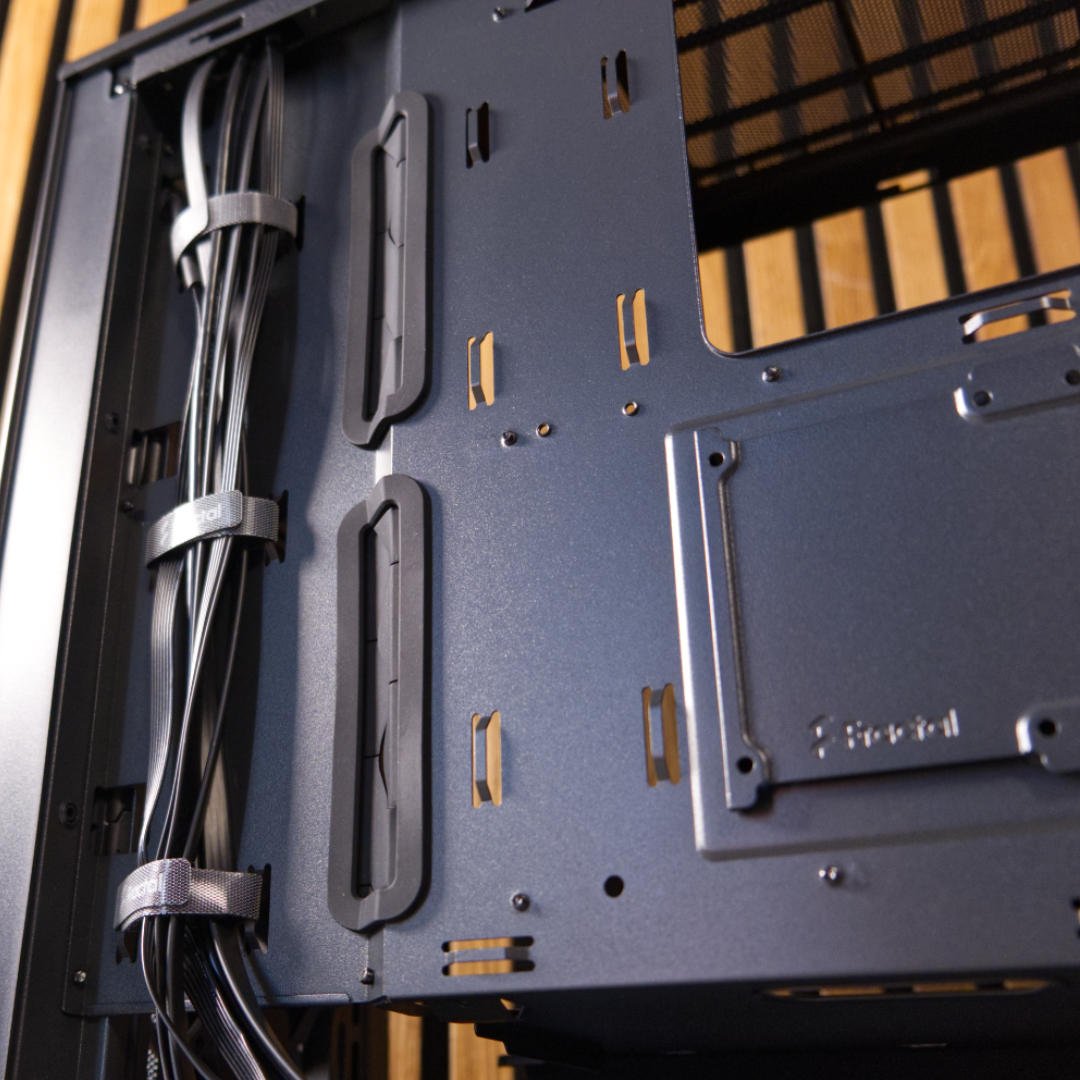
You’re treated to a spacious 30mm channel behind the motherboard tray, complete with a trio of pre-installed Velcro straps and multiple anchor points for additional ties. Fractal throws in a generous handful of zip ties and standoffs in the accessories box, and there’s ample space to route the usual suspects: 24-pin, PCIe, and front panel connectors all glide through without drama. So long as you’re not planning to cram in an RGB hub and fan controller, the layout offers just enough depth to keep your build neat and airflow unimpeded.
The one exception is up top. Like North before it, Epoch provides just a single cable-routing hole in the top-corner of the motherboard tray. It’s fine for the processor’s power cable, but it becomes a tight squeeze if you also need to route AIO fan or RGB header cables – and to tame our hot-headed Core i9-13900K, I certainly do.
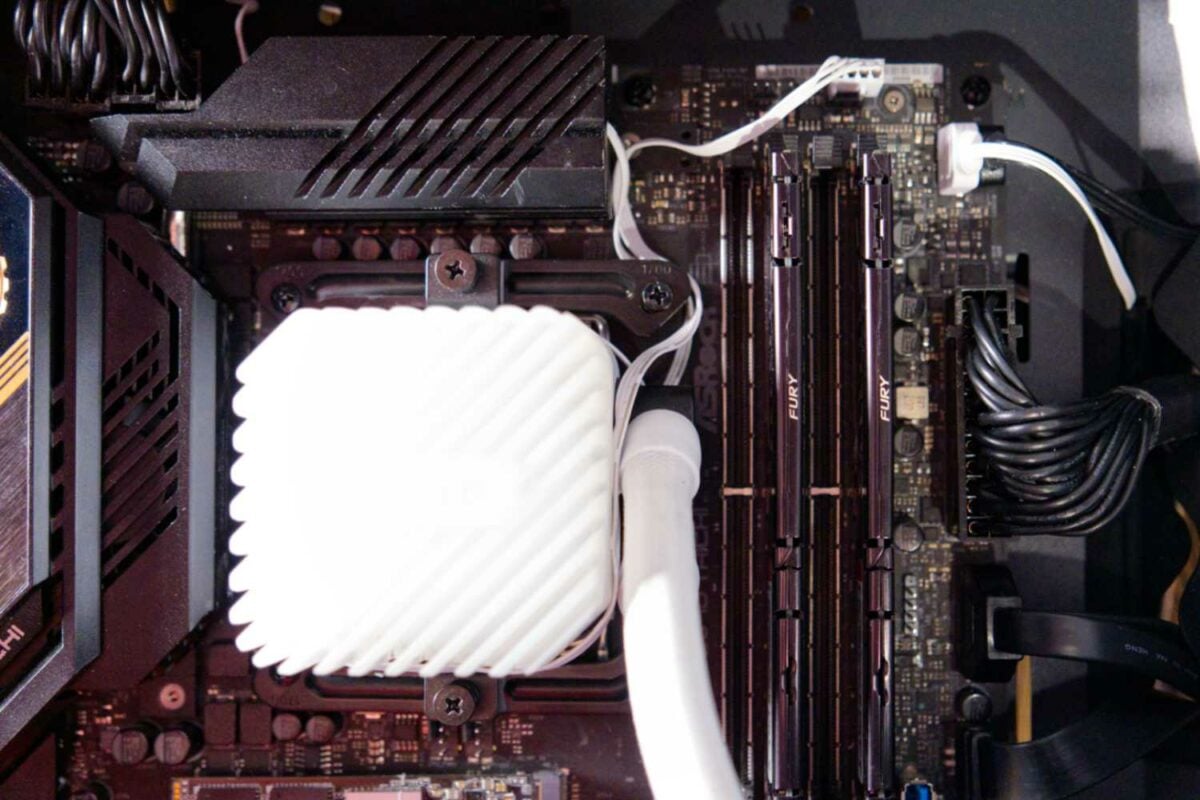
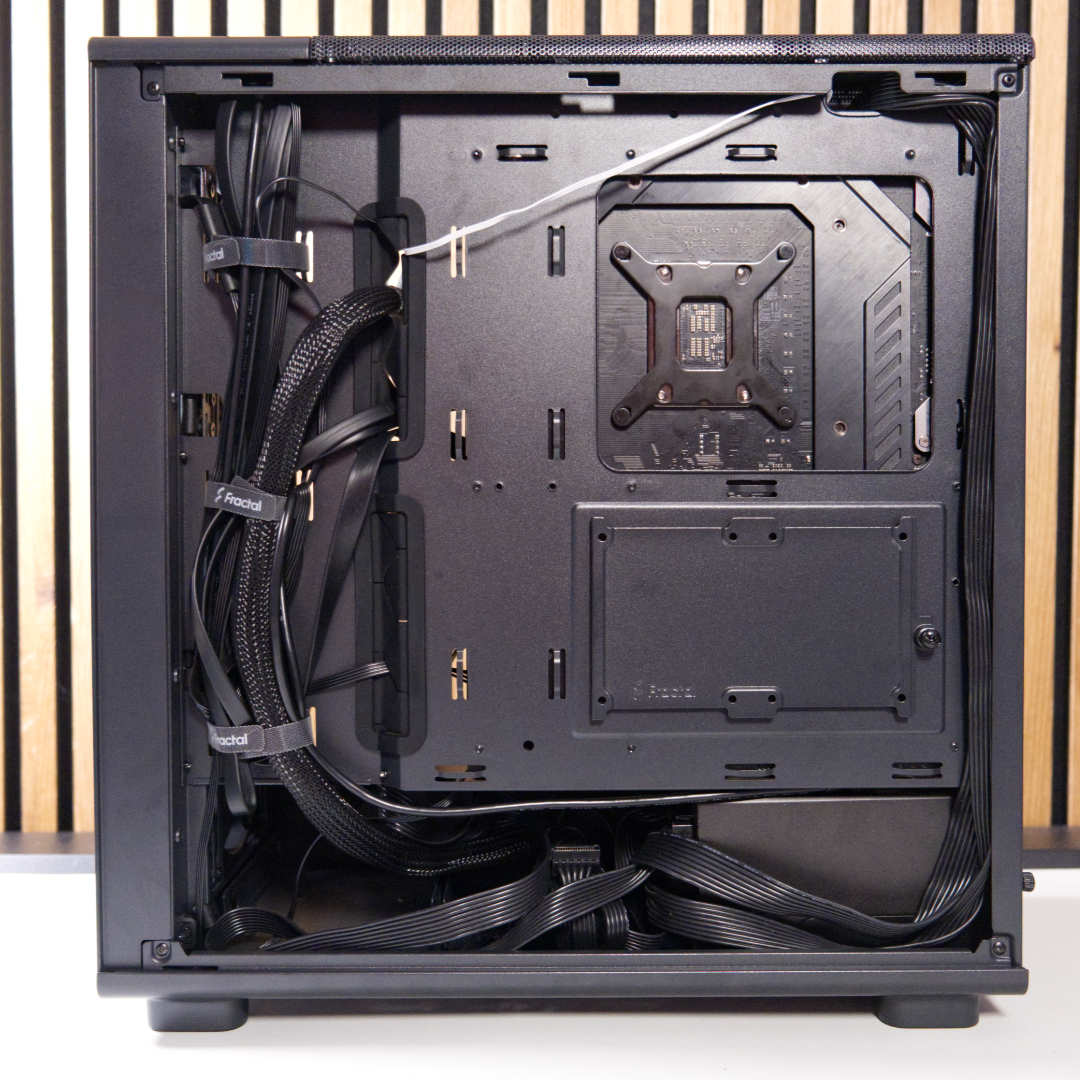
You can loop long leads around the rear and back through another grommet, assuming your cooler’s cables allow it, but many don’t. While the ARGB header made it, the fan cable from be quiet! Light Loop 240 came up short, leaving us to wrap it around the pump block to avoid a visible mess. It’s a solvable issue, but one that Fractal could’ve been prevented with a second grommet akin to North XL for more flexibility.
Overall, though, cable tidying is swift and painless. Everything slots into place with minimal force, and there’s just enough breathing room to keep things tidy, even in a system with a chunky AIO and flagship GPU.
Style
Once fully built, Epoch delivers a tidy, understated finish. This isn’t a case that screams for attention, and that’s to its credit. The mesh front panel slightly mutes the RGB glow from the Momentum fans, meaning they’re only truly visible when viewed head-on. From other angles, you’re left with the gentle ambience eminating from your other components, lending personality without overwhelming the system. It’s an approach that fits the Fractal ethos: purposeful, clean, and just the right side of flashy.
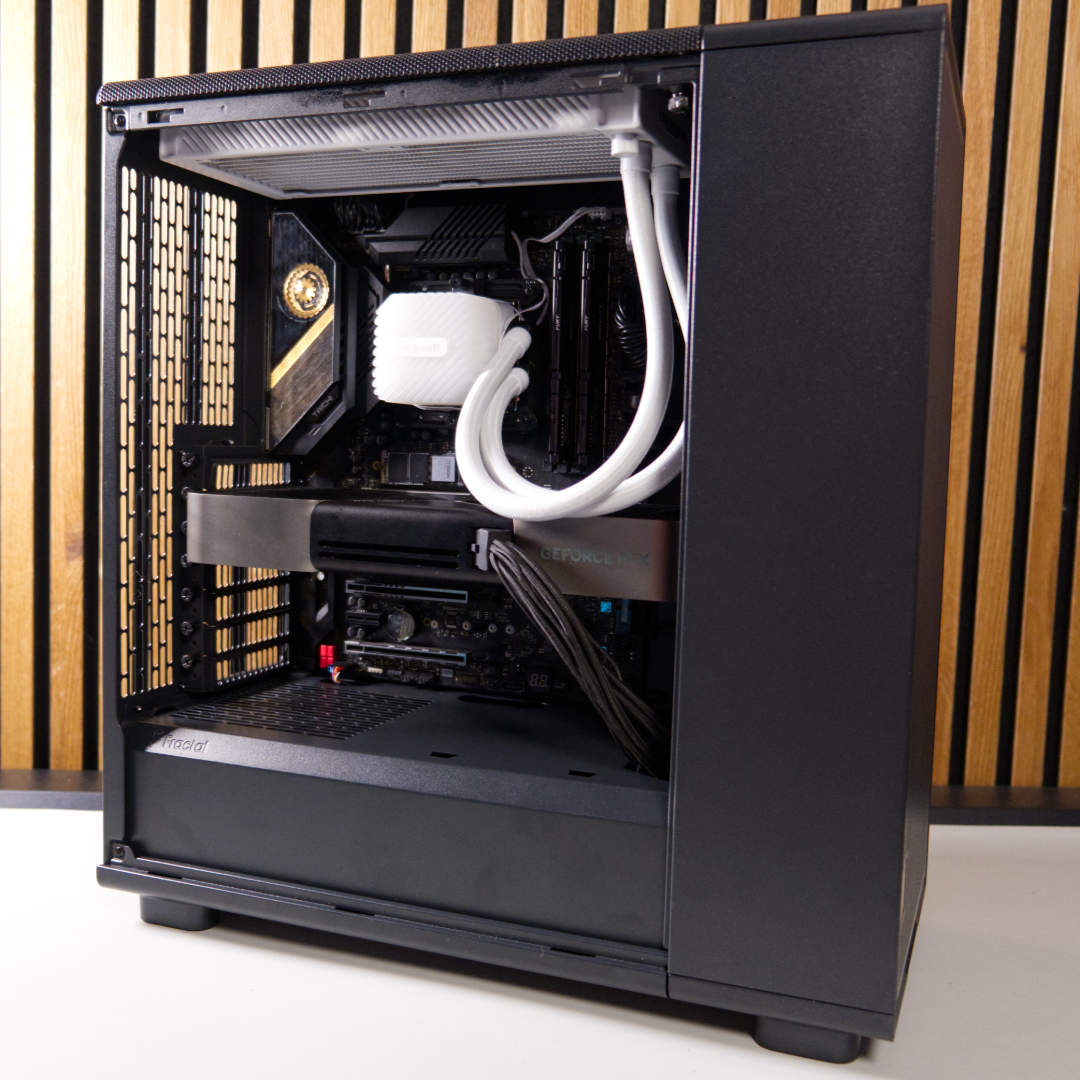
The Black TG RGB Light Tint model hits a sweet spot for me here. I make no secret that I prefer a good white build, and there’s a Clear Tint version that lets lighting loose, spotlighting all the components in your system by reflecting every bit of RGB possible. That said, the higher contrast on black builds elevates your glowing components while masking the rest, giving it a more refined aesthetic.
All in all, this is a case for those who want Fractal North but don’t care for the Scandi look. Such an idea is blasphemy in Club386 offices, but not every room gels well with wood panelling.
Conclusion
Fractal Design Epoch might not carry the visual swagger of North, nor the modular cleverness of Meshify 3 XL, but what it delivers is a focussed, refined airflow case that gets the fundamentals spot-on. It’s a chassis for builders who don’t need a conversation piece perched on the desk, just something that looks clean, cools well, and doesn’t make the cable work feel like a punishment.
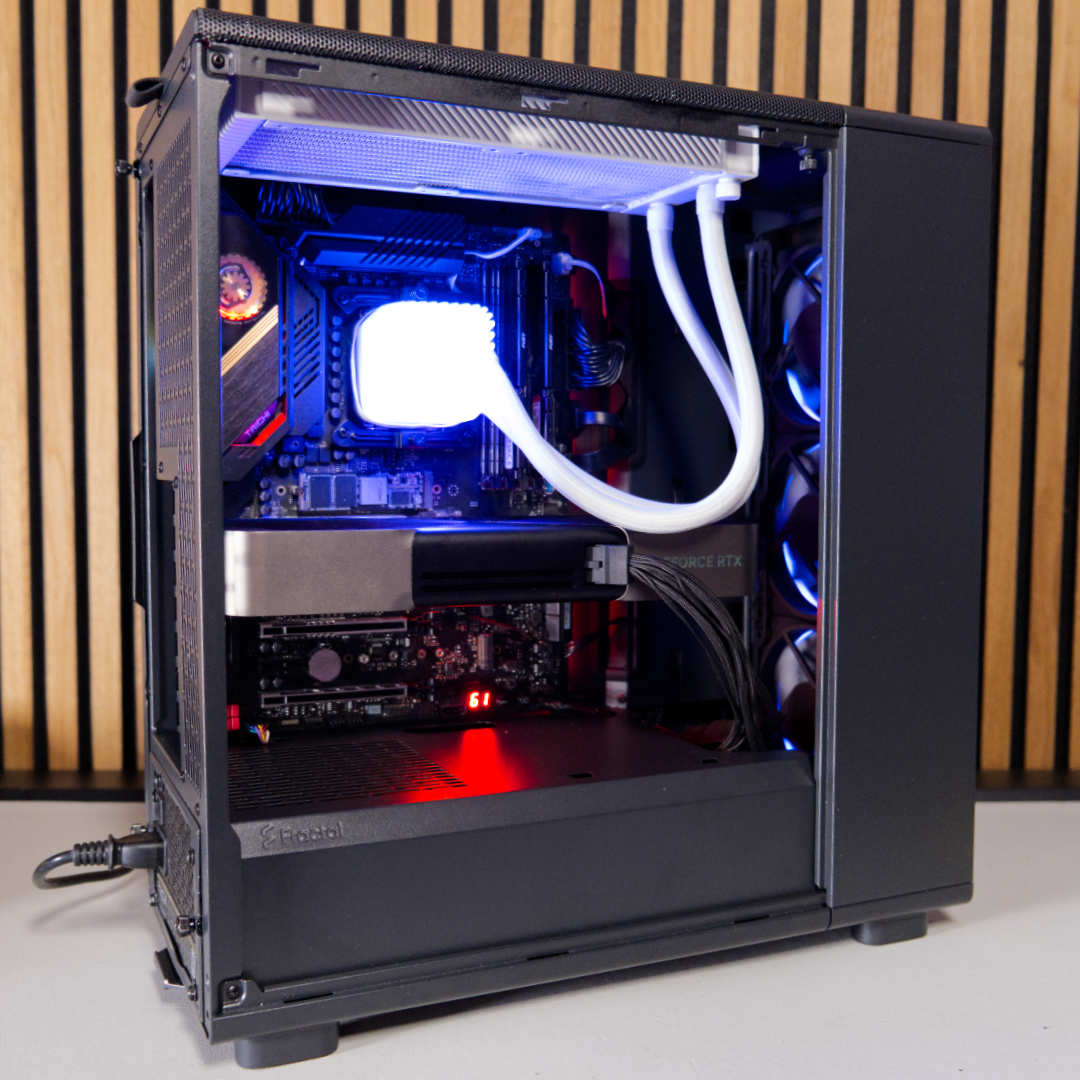
Panel access is a little hit and miss, with a slide-off top that lacks proper retention and the thumbscrew side panels feel dated, but these are minor gripes in what’s otherwise a solidly built, thoughtfully laid-out case. The included Momentum fans are a clear highlight, delivering performance and polish right out of the box, and the variety of models on offer ensures there’s a finish for most tastes, whether you’re after stealth, subtle lighting, or full-glow showcase.
If North was form meeting function in a hygge cardigan, Epoch is the same spirit in a technical tee. Clean lines, clever airflow, and just enough RGB to keep things interesting. At £99.99 for base models and £119.99 for the RGB variants, Fractal hits a sweet spot for those after a no-nonsense, visually refined case that just works – no oak panelling required.

